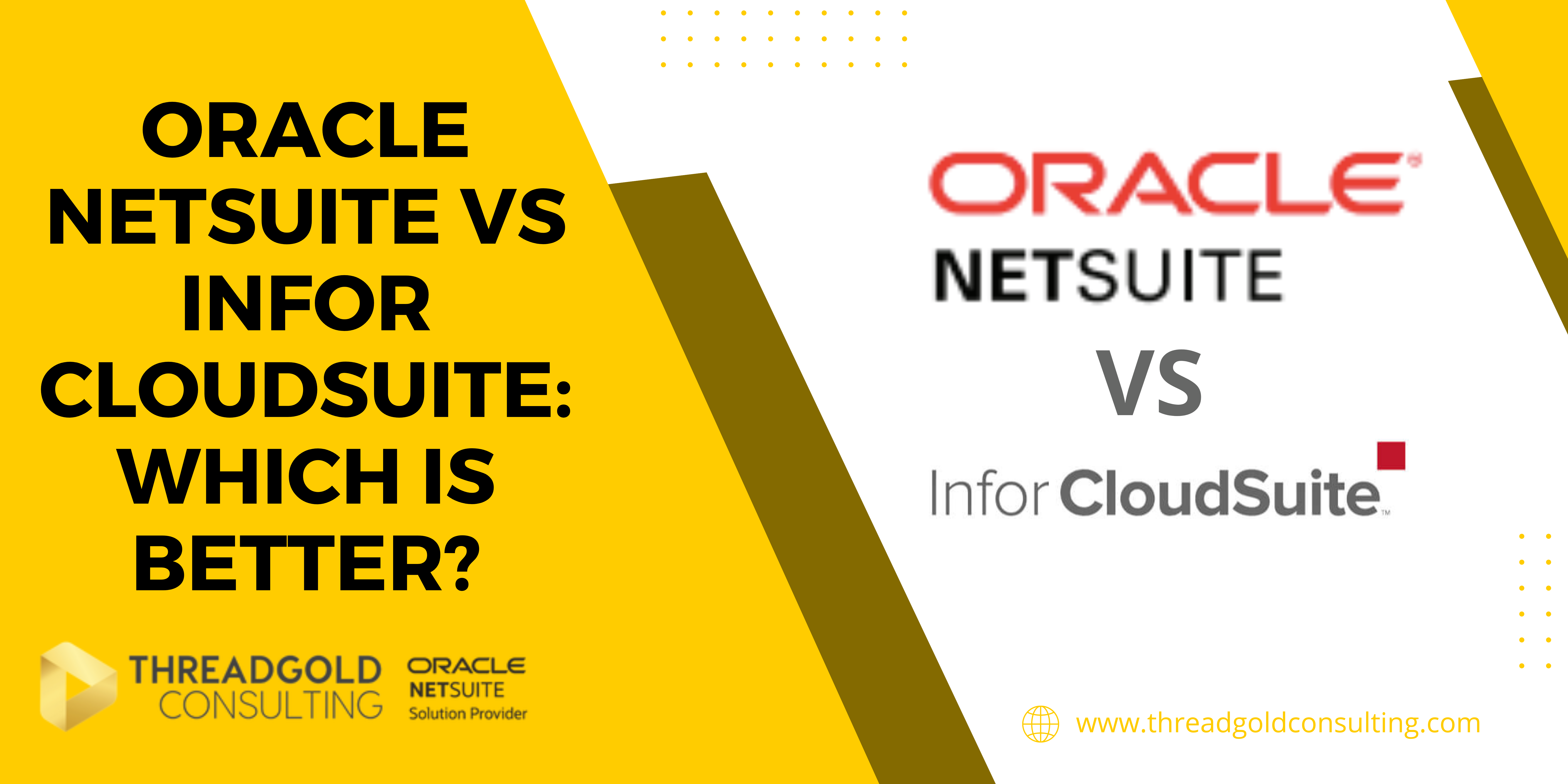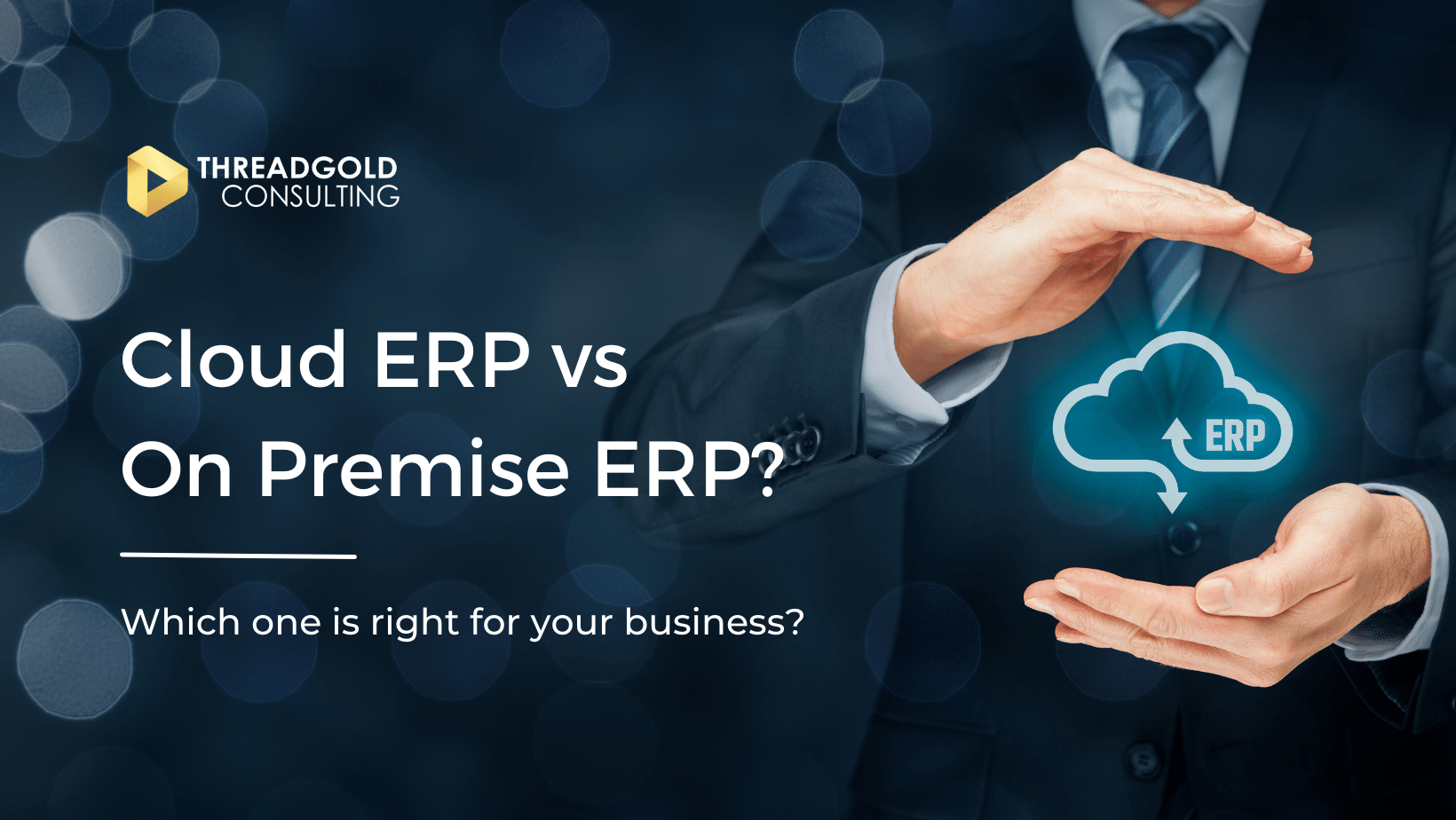What is ERP?
ERP stands for Enterprise Resource Management. In a nutshell, ERPs help organisations to manage their day-to-day business activities, such as accounting, procurement, project management, risk management, compliance, and supply chain operations. ERP systems tie together many business processes and enable the flow of data between them. By collecting an organisation’s shared transactional data from multiple sources, ERP systems eliminate data duplication and provide data integrity with a single source of truth.
What are the Typical Features of an ERP?
Enterprise resource planning systems are complete, integrated platforms, either on-premises or in the cloud, managing all aspects of a production-based or distribution business. They have many different features, and all provide slightly different final solutions. For example, Oracle NetSuite is great for multinational companies as it is a leader in financial consolidation and multi-currency transactions, whereas Acumatica is very well suited to manufacturing organisations due to it's advanced manufacturing modules.
In short, these are some of the features that you'll typically see in most ERP systems:
1. Financial Management
- General Ledger: Core accounting functionality for recording all financial transactions.
- Accounts Payable and Receivable: Managing outgoing and incoming payments.
- Budgeting and Forecasting: Tools for planning and predicting financial performance.
- Financial Reporting and Analysis: Comprehensive reports and dashboards to monitor financial health.
- Multi-Currency Support: Handling transactions in multiple currencies for global operations.
2. Human Resources Management
- Employee Records Management: Centralised database for employee information.
- Payroll Management: Processing salaries, wages, bonuses, and deductions.
- Recruitment and Onboarding: Managing hiring processes and new employee integration.
- Performance Management: Tools for appraisals, reviews, and performance tracking.
- Training and Development: Managing employee training programs and career development plans.
3. Inventory Management
- Inventory Tracking: Real-time monitoring of stock levels.
- Warehouse Management: Optimising warehouse operations, including picking, packing, and shipping
- Order Management: Handling sales orders, purchase orders, and returns.
- Supply Chain Management: Managing suppliers, procurement, and logistics.
- Demand Planning: Forecasting future inventory needs to meet customer demand.
4. Customer Relationship Management (CRM)
- Contact Management: Centralised database for customer and prospect information.
- Sales Management: Tracking sales opportunities, pipelines, and performance.
- Customer Support: Tools for managing customer service requests and support tickets.
- Marketing Automation: Managing campaigns, lead generation, and customer engagement.
- Sales Analytics: Insights and reports on sales performance and customer behaviour.
5. Manufacturing Management
- Production Planning: Scheduling and planning production activities.
- Bill of Materials (BOM): Managing the list of materials and components needed for manufacturing.
- Work Order Management: Tracking and managing production orders.
- Quality Control: Ensuring products meet quality standards through inspections and testing.
- Maintenance Management: Scheduling and tracking equipment maintenance activities.
6. Project Management
- Project Planning and Scheduling: Tools for creating project plans, timelines, and milestones.
- Resource Management: Allocating and managing project resources.
- Task and Time Tracking: Monitoring project tasks and time spent on activities.
- Budget Management: Tracking project costs and ensuring they stay within budget.
- Project Reporting: Insights and reports on project status, progress, and performance.
7. Procurement Management
- Supplier Management: Managing supplier relationships and contracts.
- Purchase Order Management: Creating and tracking purchase orders.
- Inventory Replenishment: Automating the replenishment of stock based on demand.
- Invoice Processing: Handling supplier invoices and payments.
- Spend Analysis: Monitoring and analysing procurement expenditures.
8. Reporting and Analytics
- Business Intelligence: Advanced analytics and data visualisation tools
- Customisable Dashboards: Personalised views of key metrics and KPIs.
- Real-Time Reporting: Up-to-date reports on various business operations.
- Data Integration: Combining data from multiple sources for comprehensive analysis.
- Predictive Analytics: Using data to forecast trends and inform decision-making.
9. Compliance Management
- Regulatory Compliance: Tools to ensure adherence to industry-specific regulations.
- Audit Trail: Detailed records of transactions and changes for auditing purposes.
- Document Management: Secure storage and management of critical documents.
- Risk Management: Identifying and mitigating business risks.
10. E-commerce Integration
- Online Storefronts: Integration with e-commerce platforms for seamless order processing.
- Inventory Synchronisation: Real-time updates of inventory levels across sales channels.
- Customer Portal: Providing customers with access to their order history and account information.
- Sales Analytics: Tracking e-commerce performance and customer behaviour.
These features collectively enable an ERP system to provide a comprehensive solution for managing a wide range of business processes, helping organisations improve efficiency, reduce costs, and drive growth.
So, Why do You Need an ERP System?
Companies need an ERP system for several key reasons. Here are some of the primary benefits that drive organisations to implement ERP systems:
Improved Efficiency and Productivity
ERP systems automate and streamline business processes across various departments. By eliminating manual data entry, reducing duplication of efforts, and standardising procedures, companies can significantly enhance efficiency and productivity. This automation allows employees to focus on more strategic tasks rather than repetitive administrative work.
Integrated Information
ERP systems provide a single source of truth by integrating data from different departments into a centralised system. This integration ensures that all employees have access to consistent and up-to-date information, facilitating better decision-making and coordination across the organisation.
Enhanced Visibility and Transparency
With an ERP system, companies can gain real-time visibility into their operations. This transparency helps managers monitor performance, track progress, and identify issues or opportunities promptly. Comprehensive reporting and analytics tools within ERP systems enable businesses to make data-driven decisions and improve overall performance.
Better Financial Management
ERP systems offer robust financial management capabilities, including accounting, budgeting, forecasting, and financial reporting. These tools help companies maintain accurate financial records, comply with regulatory requirements, and manage cash flow more effectively. Improved financial visibility and control lead to better financial planning and management.
Scalability
As businesses grow, their needs evolve. ERP systems are designed to scale with the organisation, accommodating increased transaction volumes, additional users, and expanded functionalities. This scalability ensures that the ERP system remains relevant and effective as the company expands.
Improved Customer Service
ERP systems often include customer relationship management (CRM) functionalities, enabling companies to better manage customer interactions and relationships. By having access to comprehensive customer data, businesses can provide more personalised and responsive customer service, leading to higher customer satisfaction and loyalty.
Streamlined Supply Chain Management
ERP systems help optimise supply chain processes by providing tools for inventory management, procurement, production planning, and logistics. This optimisation leads to reduced lead times, lower inventory costs, and improved supplier relationships. Companies can better anticipate demand, manage stock levels, and ensure timely delivery of products.
Regulatory Compliance and Risk Management
ERP systems help companies comply with industry regulations and standards by providing tools for tracking and documenting compliance-related activities. They also offer audit trails and reporting capabilities that facilitate regulatory audits. Additionally, ERP systems can help identify and mitigate business risks by providing better oversight and control.
Cost Savings
While the initial investment in an ERP system can be significant, the long-term cost savings are substantial. By improving efficiency, reducing manual processes, and minimising errors, ERP systems help companies lower operational costs. Additionally, the integrated nature of ERP systems reduces the need for multiple disparate software solutions, leading to further cost savings.
Improved Collaboration
ERP systems foster collaboration by breaking down silos between departments. With access to shared information and tools, teams can work together more effectively, share insights, and coordinate efforts. This improved collaboration leads to better project management and overall organisational synergy.
It's clear to see why an ERP system is so important, and is crucial for continued success. If you'd like to learn more about your options, get in touch and our team at Threadgold Consulting will support you in choosing the best ERP for your business!





